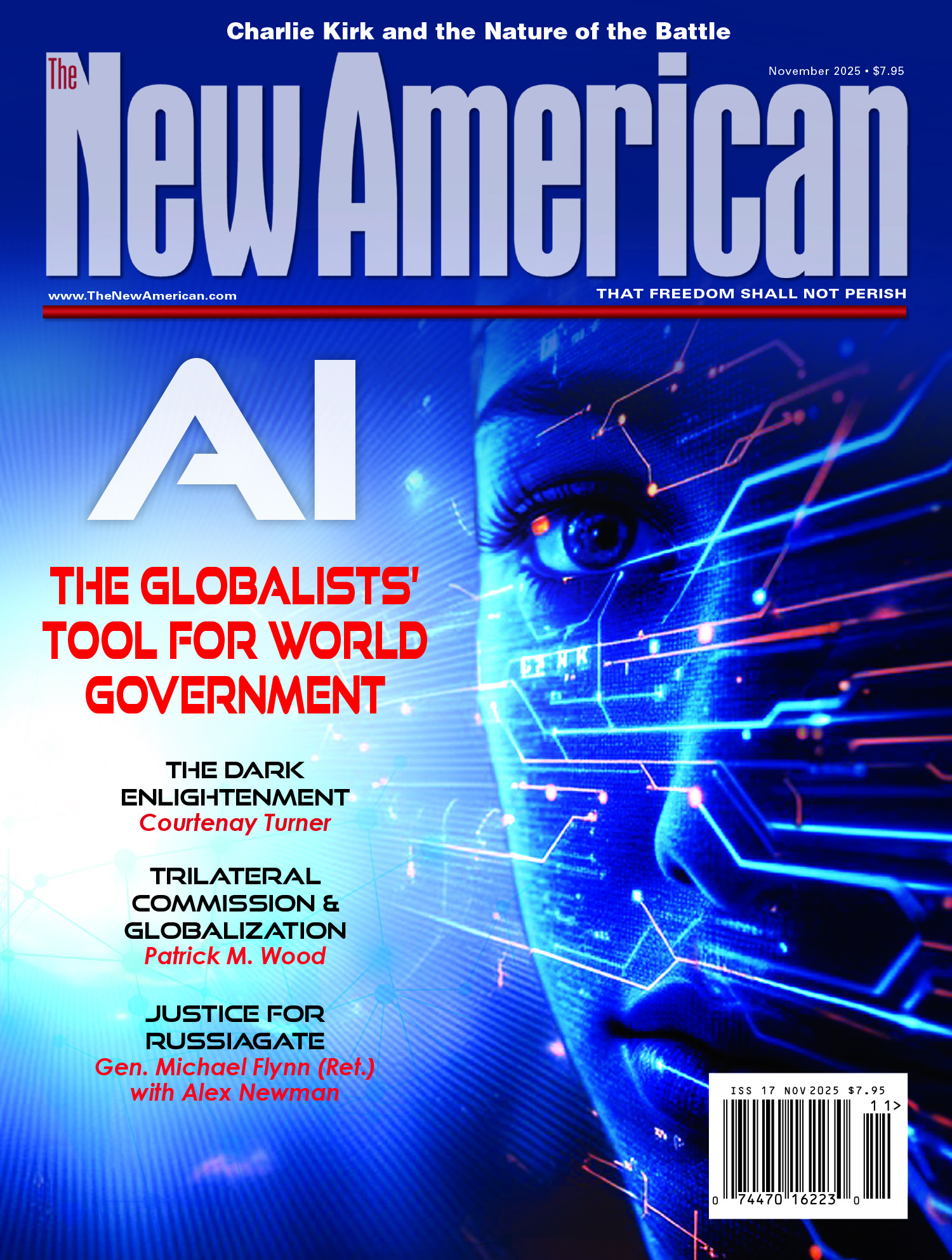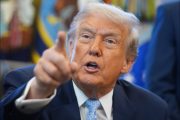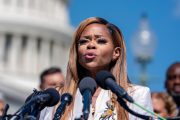
President Donald Trump is preparing an executive order that would sharply limit state authority over artificial intelligence (AI). The draft, reported by The Verge, casts AI innovation as a national-security priority and warns that state rules threaten economic growth and technological leadership. Yet the plan likely violates the 10th Amendment, which reserves core regulatory and police powers to the states. It also outlines an unusually aggressive federal campaign to preempt and override state laws.
Trump previewed the move in a post on Truth Social on Tuesday:
Investment in AI is helping to make the U.S. Economy the “HOTTEST” in the World, but overregulation by the States is threatening to undermine this Major Growth “Engine.”
He then argued that “Some States are even trying to embed DEI [diversity, equity, and inclusion] ideology into AI models, producing ‘Woke AI’.”
His message pointed to a single solution — a fully centralized regime:
We MUST have one Federal Standard instead of a patchwork of 50 State Regulatory Regimes.
Without it, he warned, “China will easily catch us in the AI race.” He urged Congress to “Put it in the [National Defense Authorization Act], or pass a separate Bill.”
The draft executive order functions as the administration’s “plan B” should Congress not act. It reveals how far the White House intends to go to impose a national AI framework that overrides divergent state approaches.
State “Discordance” as a Burden
The draft order’s opening section declares that American “leadership in Artificial Intelligence (AI) will promote American national and economic security and dominance across many domains.” It cites Executive Order 14179, which revoked what Trump calls Joe Biden’s attempt “to paralyze this industry.” It stresses that the United States is “still in a race with adversaries for supremacy within it.”
The draft suggests that the states are undermining the effort:
To win, American AI companies must be free to innovate without cumbersome regulation. But State legislatures have introduced over 1,000 AI bills that threaten to undermine that innovative culture.
It cites California’s recent law requiring disclosures based on “the purely speculative suspicion that AI might ‘pose significant catastrophic risk.’” It also targets Colorado’s new “algorithmic discrimination” statute, which, according to the draft, may “force AI models to embed DEI in their programming” and even “produce false results in order to avoid a ‘differential treatment or impact.’”
The order spells out its intention, declaring that “the United States’ AI regulatory framework must prioritize truth.” The draft never defines what that means, but uses the phrase in a way that mirrors the administration’s political agenda rather than any established technical standard.
It then attacks “sophisticated proponents of a fear-based regulatory capture strategy” who have pushed states to adopt “subjective standards.” These efforts, it warns, create a “patchwork regulatory framework” that allows “the most restrictive states to dictate national AI policy.”
Its conclusion in Section 1 is as blunt as it is alarming:
My Administration will act to ensure that there is a minimally burdensome national standard — not 50 discordant State ones.
Litigation Army and Federal Leverage
After setting the narrative, the draft moves to force. Section 3 orders the attorney general to create an “AI Litigation Task Force” within 30 days. Its “sole responsibility” would be challenging state laws. The order instructs the task force to sue on grounds that such laws “unconstitutionally regulate interstate commerce, are preempted by existing Federal regulations, or are otherwise unlawful.”
The task force must coordinate with the “Special Advisor for AI and Crypto,” the “Assistant to the President for Science and Technology,” and others. It will constantly monitor new state laws “that warrant challenge.”
Section 5 deploys financial pressure. The Department of Commerce must publish a list of state AI laws that conflict with federal policy. Those states may lose access to remaining Broadband Equity, Access, and Deployment (BEAD) funds. The draft commands Commerce to issue a policy notice stating that states with any identified laws “are ineligible for non-deployment funds, to the maximum extent allowed by Federal law.”
The draft offers a justification. A fragmented regulatory landscape “threatens to undermine BEAD-funded deployments” and “the growth of AI applications reliant on high-speed networks.” But the connection feels forced. It ties broadband policy, which is state-driven, to AI rules, which are now a federal priority.
Agencies must also review their discretionary grant programs. They may condition funding on states “not enacting an AI law that conflicts with the policy of this order” or, if they already did, agreeing “not to enforce” it during any year they receive funds.
National AI Rulebook
The draft order instructs federal agencies to build national rules that displace state frameworks. Within 90 days, Commerce must publish an evaluation of state laws. It must identify any law that “conflicts with the policy” of the order or that “requires AI models to alter their truthful outputs.” It must also flag any rule that would compel disclosure “in a manner that would violate the First Amendment.”
Section 6 pushes the Federal Communications Commission (FCC) into the arena. The FCC chairman must start a proceeding to explore “a Federal reporting and disclosure standard for AI models that preempts conflicting State laws.” This would turn communications authority into a tool for national AI governance.
Section 7 orders the Federal Trade Commission (FTC) to issue a policy statement on how the FTC Act’s ban on “deceptive” practices applies to AI. The statement must explain how state laws that require “alterations to the truthful outputs of AI models” are preempted by federal law.
The order plans for a new, sweeping law:
The Special Advisor for AI and Crypto and the Director of the Office of Legislative Affairs shall jointly prepare for my review a legislative recommendation establishing a uniform Federal regulatory framework for AI that preempts State AI laws that conflict with the policy set forth in this order.
The job of “AI and crypto czar” belongs to David Sacks. He is known as a Silicon Valley power broker whose globalist, technocratic network stretches across the venture-capital and AI industries now poised to benefit from federal centralization.
Rise of a New Centralized Order
Indeed, the draft order elevates the firms best positioned to gain from a federalized AI regime. Ironically, with a long history of promoting DEI and other destructive, totalitarian agendas, they are now being presented as champions of national revival while their core aims and behavior remain unchanged. As argued by activist Brian Jacobson:
[Trump] is pitting these red washed and still very woke companies against local governments and their citizens. Now YOU are woke if you oppose their agenda.
The administration’s broader AI push has only deepened this alliance. Early in his second term, Trump launched the “Stargate Project,” a $500 billion public-private effort to build next-generation AI infrastructure. Trump’s “partners” are the largest globalist corporations in the sector — Oracle, OpenAI, SoftBank, MGX, Nvidia, Microsoft, and others.
Since then, the administration has acted aggressively to embed AI and sweeping digitization into finance, healthcare, education, defense, immigration enforcement, government operations, and government identity systems.
The White House frames this direction as necessary to beat China. But the claim that the United States must become more centralized to “win the race” does not hold. China’s model only works under authoritarian conditions. The United States cannot imitate it without discarding constitutional restraints, federalism, and the 10th Amendment protections that define the nation’s governing framework itself.
This is why critics such as Catherine Austin Fitts warn that the emerging AI architecture forms the backbone of a larger “digital control grid.” As she recently explained, AI is the analytic engine needed to track and manage all transactions, movements, and interactions. Trump’s draft order accelerates that trajectory.





